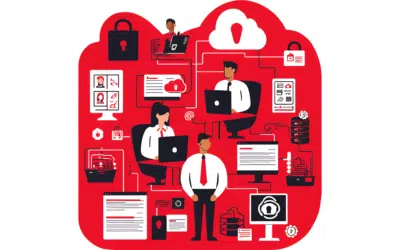 You’ve been putting that customized business continuity plan off for months now, but you’ve finally decided to go through with it. You start by talking to members of your staff, partners, and service providers. And it doesn’t take long to see that everyone has a different opinion about what to recover first when a business disaster strikes. The head of your IT department demands your servers are a top priority, while your Vice President argues that without network security being reestablished pronto, your business is left vulnerable to even further damage. Who’s right? It may be difficult to decide. That’s why we’ve compiled these fundamental ideas to consider when drafting your business continuity plan.
You’ve been putting that customized business continuity plan off for months now, but you’ve finally decided to go through with it. You start by talking to members of your staff, partners, and service providers. And it doesn’t take long to see that everyone has a different opinion about what to recover first when a business disaster strikes. The head of your IT department demands your servers are a top priority, while your Vice President argues that without network security being reestablished pronto, your business is left vulnerable to even further damage. Who’s right? It may be difficult to decide. That’s why we’ve compiled these fundamental ideas to consider when drafting your business continuity plan.
Speak to many members of your organization
And not just your IT department – which may sound like a bit of an oxymoron coming from an IT provider’s blog. However, the reason behind this is simple. Suppose you have an IT staff member called Jane, who is responsible for a series of applications that automate your e-commerce system. If you call a business continuity meeting concerning to identify assets to prioritize during a disaster, what do you think Jane will say? She’ll likely point to her group of applications, since to her this is what she prioritizes and spends her days on. And it’s not just Jane; each staff member will probably voice that their particular job (whether that’s security, server maintenance or something entirely different) needs to be prioritized. It’s human nature to think of your responsibility and role first. We all do it.
The key is to get more than one opinion. It’s not a bad idea to start with the leaders of your company, and then work your way down. Leaders generally think in a broader sense about your organization as a whole, rather than one particular facet of it.
Consider where your business is going
When developing your business continuity plan, it’s easy to fall into the trap of thinking about your business as it is today. While you’ll draft your plan in the present, it needs to be created with the future in mind. For example, if you’re considering joining the Cloud or virtualizing your servers in the next year or so, how is this going to impact your plan? It’s smart to think of this sooner rather than later, as it could cause a major shift in your priorities. If you start deploying your business continuity plan but then have to switch gears further down the line, it’ll likely cost your company a lot of money.
Examine the interdependency of your business
Remember to connect the dots between your IT department and business processes. For instance, if your email system can’t run without the use of a particular IT application, it will do no good for you to have your email system as a priority 1 issue and that IT application as a priority 3. In this scenario, the IT application would need the same priority as the email system – if not higher, or else your email system will simply not work.
The point is to map out the interdepencies of your business processes and IT, so that you know what depends on what. That way you’re not left in a pickle when disaster strikes.
Need help getting started with your business continuity plan? Contact us today to learn how we can help.








